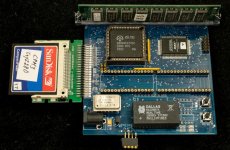Note, the BCBs are the structures that define/manage the buffers, not the buffers themselves. I guess that raises the question: are you trying to force all 16-bit loads/stores onto even memory addresses? or is this just about the I/O buffers?
For aligning at compile time, you can rely on the BIOS starting on a page boundary. So, you can leverage that knowledge to force buffer/structure alignment, in spite of the fact that REL files can be relocated to any byte address. The REL files are used to create an SPR (System Page Relocatable) which forces a page boundary.
The other way is to "allocate" the buffers (and possibly BCBs) at cold boot time. You have full control then, albeit at the cost of extra code. But for data buffers you'll have to put them in common memory (unless you support XMOVE) which will require allocation at compile time, or at least link time.

